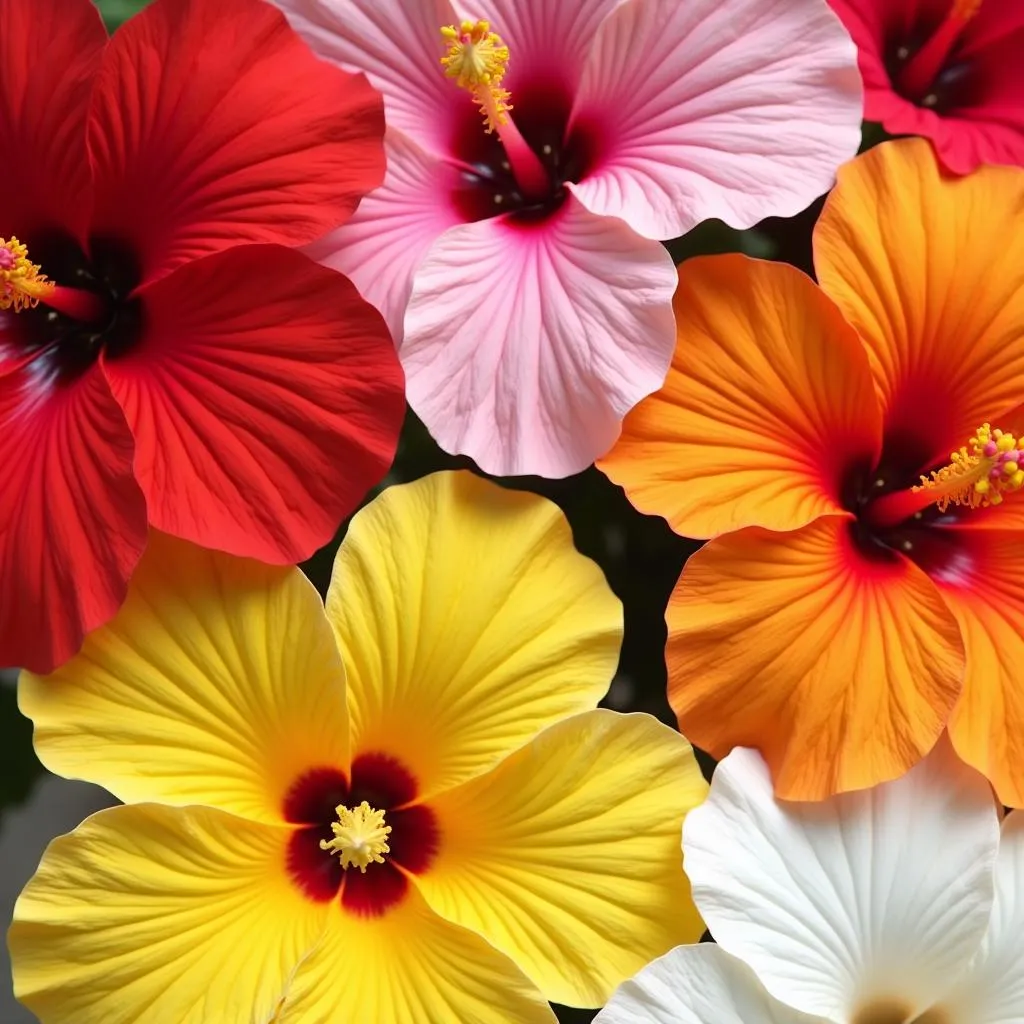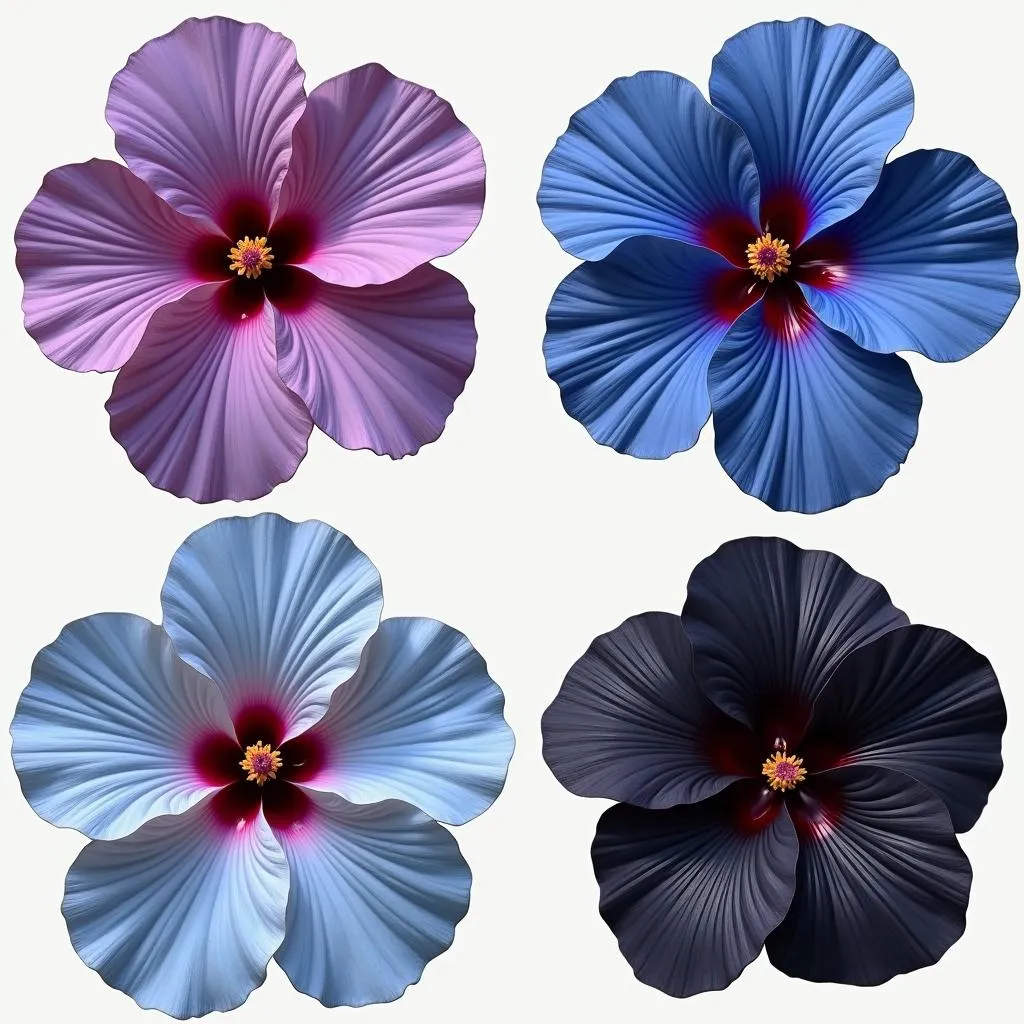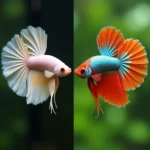Hibiscus flowers are known for their vibrant colors and tropical beauty. But have you ever wondered, “What color is a hibiscus flower?” The answer isn’t as simple as you might think! While we often picture a bright red hibiscus, these stunning flowers actually bloom in an incredible array of colors.
 Hibiscus flowers in various colors.
Hibiscus flowers in various colors.
Exploring the Rainbow of Hibiscus Colors
Hibiscus flowers come in a wide spectrum of colors, each with its own unique charm. Some of the most common hibiscus colors include:
- Red: The classic hibiscus color, often associated with passion, love, and beauty.
- Pink: Symbolizing gentleness, grace, and happiness, pink hibiscus flowers are a delicate delight.
- Orange: A vibrant and energetic color, orange hibiscus flowers represent enthusiasm, creativity, and warmth.
- Yellow: Representing joy, friendship, and new beginnings, yellow hibiscus flowers bring a cheerful touch to any garden.
- White: Symbolizing purity, innocence, and spirituality, white hibiscus flowers offer a sense of serenity and peace.
Beyond the Basics: Unique Hibiscus Color Combinations
Beyond these single hues, hibiscus flowers can also boast stunning color combinations:
- Bi-colored: These flowers feature two distinct colors, often with one color bleeding into the other, creating a mesmerizing effect.
- Multicolored: Some hibiscus varieties display a vibrant mix of three or more colors, resulting in a truly spectacular display.
 Close-up of rare hibiscus flower colors.
Close-up of rare hibiscus flower colors.
Factors Influencing Hibiscus Flower Color
Several factors can influence the color of a hibiscus flower, including:
- Variety: Different hibiscus species and cultivars are bred to produce specific colors and patterns.
- Soil pH: The acidity or alkalinity of the soil can affect the availability of certain nutrients, influencing pigment production in the flowers.
- Sunlight: Hibiscus plants need plenty of sunlight to produce vibrant blooms. Insufficient sunlight can result in paler colors.
- Temperature: Extreme temperatures can also impact flower color, sometimes leading to fading or color changes.
The Beauty of Hibiscus: More Than Just a Pretty Flower
Hibiscus flowers are more than just a feast for the eyes. They offer a range of uses and benefits:
- Ornamental Plants: Hibiscus plants are popular choices for gardens and landscapes, adding a touch of tropical flair to outdoor spaces.
- Tea and Beverages: Dried hibiscus flowers are used to make a refreshing and tart tea, known for its vibrant color and potential health benefits.
- Food and Culinary Uses: In some cultures, hibiscus flowers are used in salads, jams, and other culinary creations, adding a unique flavor and visual appeal.
 A glass of refreshing hibiscus tea.
A glass of refreshing hibiscus tea.
Conclusion
So, what color is a hibiscus flower? The answer is a vibrant spectrum of possibilities! From classic reds and pinks to unique bi-colored and multicolored varieties, hibiscus flowers offer a kaleidoscope of colors to brighten any setting. Whether you’re drawn to their beauty, their culinary uses, or their symbolic meanings, hibiscus flowers are a testament to the diversity and wonder of the natural world.

